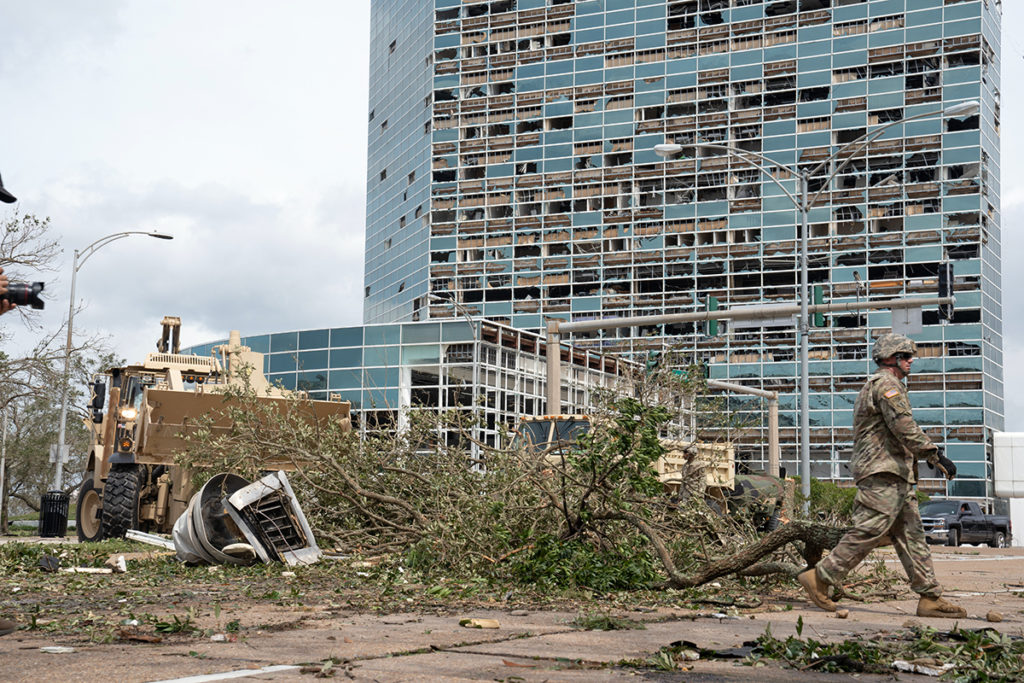Engineers have designed buildings that can withstand hurricanes, but they often sustain costly exterior damage from flying debris. Through a grant from the National Science Foundation, Colorado State University researchers will work to understand and predict debris hazards from hurricane-force winds to improve buildings and make cities more resilient.

The urban setting, with buildings of various sizes and shapes, makes it difficult to anticipate the path of strong wind and damage it will cause. Principal investigator Yanlin Guo, an assistant professor in the Department of Civil and Environmental Engineering, and her colleagues will use a novel approach to model the underlying physical process of debris impact on clustered urban buildings.
By better understanding the way wind flows around buildings and the flight trajectory of debris, they will improve risk assessment to help cities prepare for extreme wind, saving money and recovery time.
While damage to a building’s exterior, such as broken glass facades and windowpanes, may seem insignificant compared to structural damage, it can have devastating effects. Exterior damage often leads to interior damage, and repairs can be so costly that sometimes buildings are demolished instead of being repaired.
“A building’s facade protects the occupants and contents of the building,” Guo said. “Once the facade is heavily damaged, cascading water intrusion will cause interior damage and loss of building functionality, which in turn negatively impact the local economy and urban resilience.”
A novel approach
The team will use advanced machine learning techniques to develop new computer models to simulate the source, flight and impact of windborne debris. To validate the models, new wind tunnel tests will capture three-dimensional urban wind fields and debris trajectories, resulting in first-of-its-kind data necessary for representing complex urban winds.
The novel wind tunnel experiments will rely on high-speed cameras and computer vision, a branch of artificial intelligence based on visual input, similar to how human brains process information from images.
“This project will use a combination of new computational models with state-of-the-science, shared-use facilities through NSF’s NHERI (Natural Hazards Engineering Research Infrastructure) program,” said co-investigator John van de Lindt, a Civil and Environmental Engineering professor and director of the Center of Excellence for Risk-Based Community Resilience Planning, funded by the National Institute of Standards and Technology.
Guo and van de Lindt will work with co-investigator Kurtis Gurley, a University of Florida professor, utilizing the Boundary Layer Wind Tunnel, a NHERI experimental facility at the University of Florida.
Visualizing the physics of debris impact
Guo and her colleagues will create an interactive augmented reality (AR) tool to visualize the flow of wind around building clusters and debris flight trajectory, so non-expert users can explore the physics behind hurricane-strength wind damage.
Guo will use the AR tool in her class, CIVE 504 Wind Engineering. It also will be a centerpiece of ENvision, a CSU summer program that exposes high school students from underrepresented groups to engineering and encourages STEM career paths.